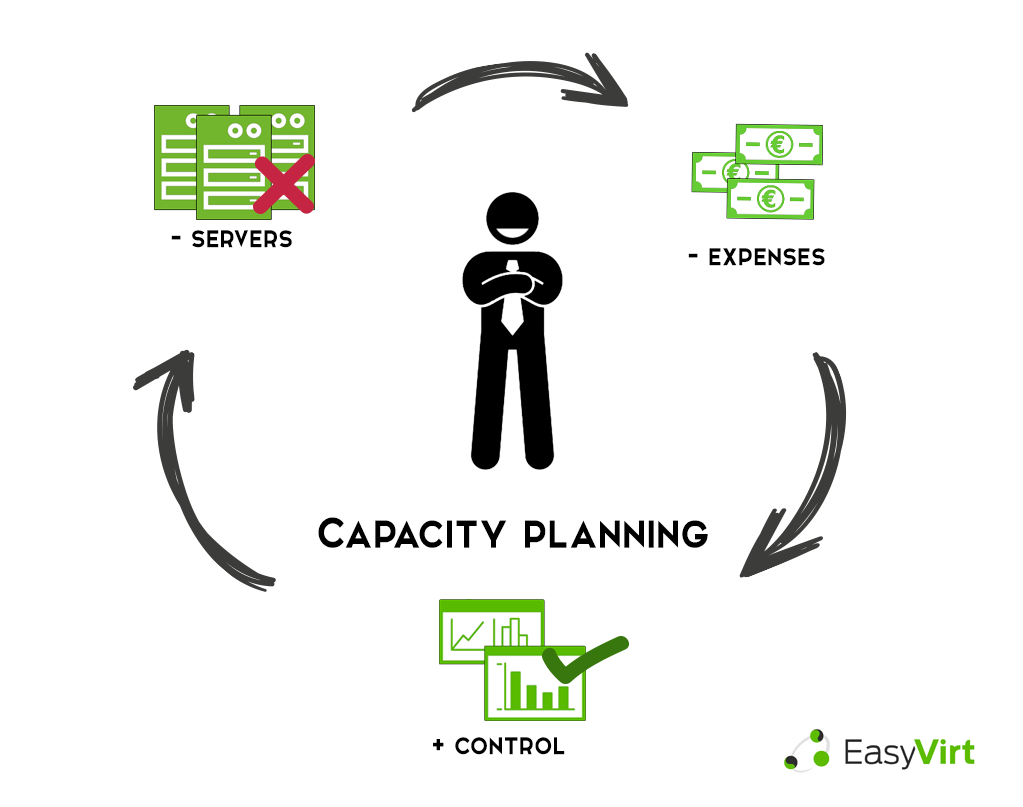“Capacity planning” is often equated with something complicated.
Anticipation, benefit, simplicity, these are the words that should more accurately stand out when we approach the subject.
Currently, if the capacity planning suffers from this complex image, it is because it is not used enough or badly used …
Decision-making is usually done on a randomly, without any specific information.
The first stake being to have no problem, we buy very wide to reassure (many servers, a lot of Ram resources, CPU …), without any specific indicator …
This, in addition to creating a lot of costs, leads to an oversized infrastructure and additional unnecessary problems …; In fact, being very large in resources does not force the teams to manage / manage the fleet of virtual machines (no process of de-commissioning, resizing, validation of PCA …); This laxity in the steering involves more risk for a greater workload …)
Why complicate the task and not use a simple and effective capacity planning?
In the reverse case, when using a capacity planning tool, very important differences can be seen very quickly. Through precise management of the infrastructure, good control of indicators, anticipation of hazards, results in a much more serene management.
Finally, capacity planning reduces costs and risks while saving time.
It is in this case that the virtuous circle of capacity planning takes place, its contribution is beneficial and appreciated.



